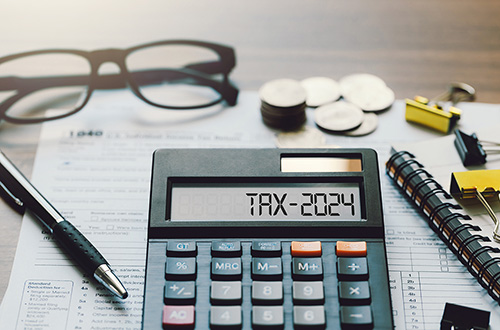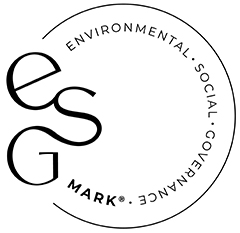With only a few weeks remaining of the 2023–24 tax year, now is the perfect opportunity to consider actions to improve your tax position.
Pension allowance
For the 2023/24 tax year, you are able to contribute up to £60,000 (gross) into a pension scheme. This allowance may be reduced for any individuals whose income is in excess of £200,000. Please be aware that the amount that you are able to contribute and receive tax relief for is capped at the individual’s earnings. If you do not have any earnings during the tax year, you are able to make a maximum net contribution of £2,880 (effectively, £3,600 gross).
Personal pension contributions attract basic rate tax relief at source and therefore the £60,000 gross contribution only requires a £48,000 personal payment.
The pension contribution increases your basic rate threshold and therefore if you are a higher or additional rate taxpayer you will receive additional tax relief on the contribution made via your tax return.
Furthermore, the pension contributions effectively increase the threshold at which the personal allowance is reduced and Child Benefit is clawed back.
Therefore, if your income is in excess of £100,000 and your personal allowance is reduced, pension contributions can preserve part or all of your personal allowance depending on your circumstances, for anyone with income between £100,000 and £125,140, pension contributions can provide tax relief at an effective rate of 60%.
If you have held a pension scheme in previous years and did not fully utilise your allowance in any of the previous three tax years, any unused allowance is available this year. Contributions are first allocated against your current year‘s allowance and then the prior years’ on an earliest first basis. Therefore, any unused allowance from 2020/21 will be lost if not used by 5 April 2024.
Any contributions made by your employer or your company also count towards your allowance, so these need to be taken into account when making any additional contributions to ensure you do not incur a Pension Savings Tax Charge.
Pensions for all
Pension rules allow contributions to be made by, or for, all UK residents, including children. So consider making a net contribution of up to £2,880 (effectively, £3,600 gross) each year for members of your family, even those who do not have earnings.
ISA allowance
The ISA allowance for 2023/24 is £20,000, which can be placed in any combination of cash or stocks and shares ISAs. The junior ISA limit is £9,000. Any income and capital gains received within your ISA is tax free.
This allowance cannot be carried forward, so to utilise the relief, the investment must be made on or before 5 April 2024.
Preservation of Personal Allowance
With the tax brackets frozen and rising inflation, more taxpayers are finding themselves in a situation of being assessed at higher rates of tax. This is especially a problem for those now earning between £100,000 and £125,140 as this is where the personal allowance is abated by £1 for every £2 earned above £100,000. As mentioned above, personal pension contributions are an extremely tax efficient way of receiving tax relief from the extension of basic rate band and increasing the threshold at which the personal allowance is reduced.
Another option to reclaim your personal allowance is by making charitable donations to a registered charity.
The tax relief is similar to pension contributions in that they are also made net of 20% basic rate tax. This 20% uplift is reclaimed by the charity.
As with pension contributions, gift aid donations increase the basic rate threshold and therefore enable you to claim higher or additional rate tax relief.
Capital Gains Tax
The Capital Gains Tax (CGT) annual exemption, i.e., tax free gains, is £6,000 (reduced from £12,300 in 2022/23). The exemption is available to each individual, including minor children, but any exemption unused in a year cannot be carried forward. From 6 April 2024, the annual exemption will reduce to £3,000 per individual.
For the 2023/24 tax year, capital disposals are reportable to HMRC if the total proceeds exceed £24,000. This amount is four times the annual exemption (£12,000 for 2024/25).
Married couples and civil partners can transfer assets between them on a no gain/no loss basis and such transfers should be considered to ensure that the annual exemption can be fully used.
Where one spouse or civil partner is a higher rate taxpayer but the other will not have used his or her basic rate band in full, similar transfers should be considered to ensure that at least some of any taxable gain is liable at 10% rather than 20%, or 18% rather than 28% for sales of residential property.
It is important to ensure that any such transfer is outright and unconditional.
Please be aware that if you sell a UK residential property and a Capital Gains Tax liability arises, you will be required to submit a Capital Gains on UK Property return within 60 days following the date of completion.
Inheritance tax
Each tax year, you are allowed to gift £3,000 without any Inheritance Tax (IHT) implications. Gifts of more than £3,000 made to an individual can later become subject to IHT if you die within seven years.
Any unused allowance from the previous tax year is also carried forward, and if you did not make gifts of £3,000 in the last tax year, you could gift up to £6,000 before 6 April 2024 with no IHT consequences.
Dividend tax-free allowance
The dividend tax-free allowance is decreasing from £1,000 to £500 from 6 April 2024, while the dividend tax rates are remaining at 8.75%, 33.75%, and 39.35%, depending on what tax band you fall into. Therefore, ensuring that you have utilised your dividend allowance prior to this change can provide you with some extra tax-free cash.
Care should be taken to ensure that there are reserves available to make a dividend.
Family business
If you are self-employed or have a family company, consider employing your spouse or taking them into partnership to allow potential redistribution of income. This can help ensure that both your and your spouse’s personal tax-free allowances and basic rate bands are fully utilised.
Arrangements need to be commercial to be effective, and care should be taken around national minimum wage and pension auto enrolment rules.
Property income – Utilising tax bands for married couples/ civil partners
Couples that are married or in a civil partnership and let out a rental property are by default taxed on an equal share of the profits regardless of the underlying ownership.
This could be a problem for couples where there is a mismatch in tax rates, for example one individual has no earnings and the other is a higher/ additional rate taxpayer. In this situation, it would be more tax efficient if the lower earner was assessed on a greater proportion of the rental profit .
It is possible to do this by notifying HMRC of a different underlying ownership, and the income can be split based on the revised shares from the date notification has been received by HMRC.
The underlying ownership can be revised using a Declaration of Trust, which a solicitor can prepare. It is not effective for tax until HMRC have been correctly notified though, and cannot be backdated.
Tax efficient investments
You can reduce your income tax liability by up to 30% of the amount invested in Venture Capital Trust (VCT) and Enterprise Investment Scheme (EIS) shares and up to 50% for Seed Enterprise Investment Scheme (SEIS) shares. The maximum investment that can be made per annum on which you can claim income tax relief is £200,000 for VCTs, £100,000 for SEIS and £2 million for EIS as long as at least £1 million of the investment qualifies as knowledge intensive.
Income tax relief is limited to the amount which reduces your income tax liability to nil. An investment in 2023/24 can also be carried back and utilised in 2022/23 if the investment limit for that year was not fully utilised (EIS and SEIS only).
EIS also offers Capital Gains Tax reliefs, deferring capital gains that you may have incurred on other assets such as land, property, shares etc. SEIS allows for gains up to 50% on other assets in the year, to be exempted from Capital Gains Tax. If your VCT pays dividends, these are exempt from Income Tax and do not need to be reported on your Self-Assessment tax return.
These schemes are designed to help smaller companied raise capital; therefore these investment are generally seen as higher risk. If you would like any further information please contact a member of our Tax and Financial Services team.
This is intended as a summary and overview of the tax situation and does not constitute financial advice. No action should be taken without first seeking professional advice specific to your circumstances.
Information accurate as at February 2024.
If you have any questions about the above, or would like more information specific to your circumstances, please enter your email address below and we will get in touch:














